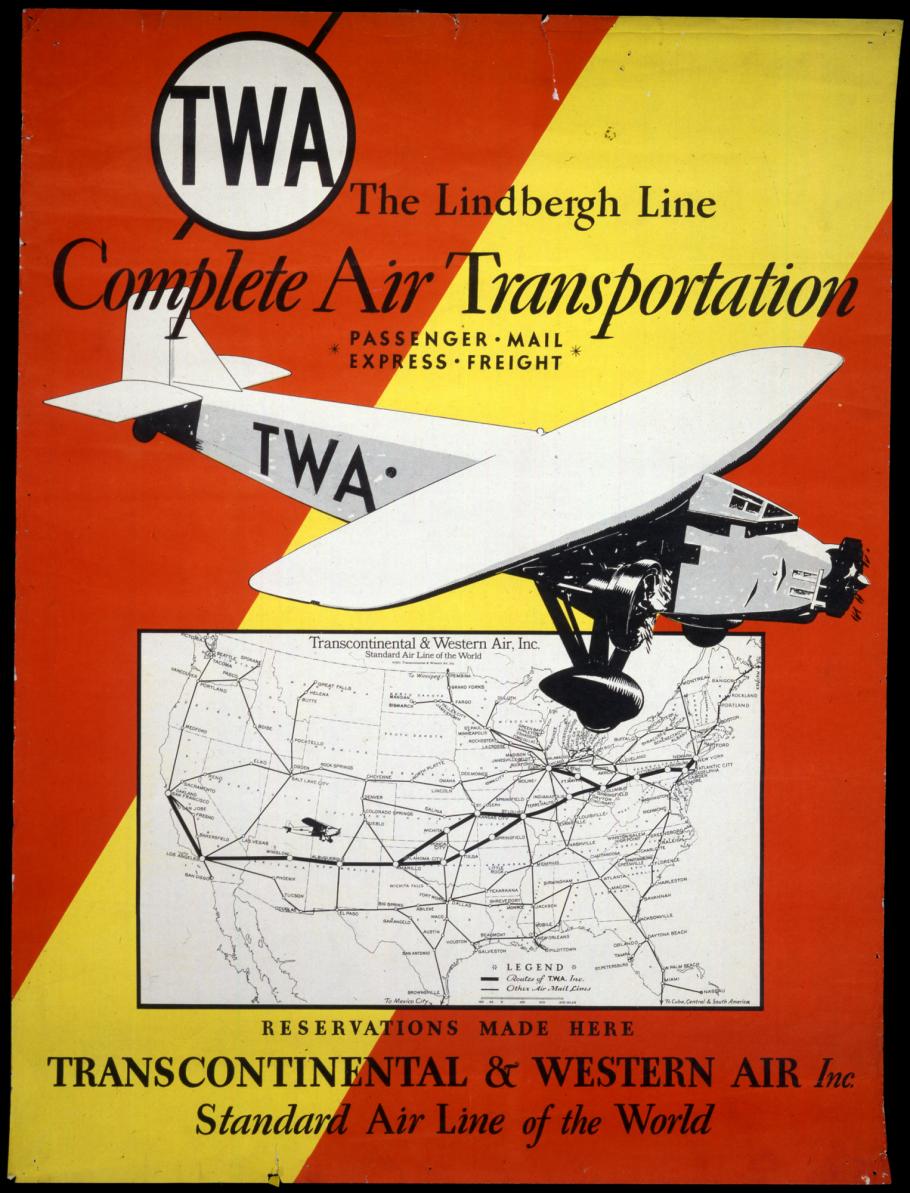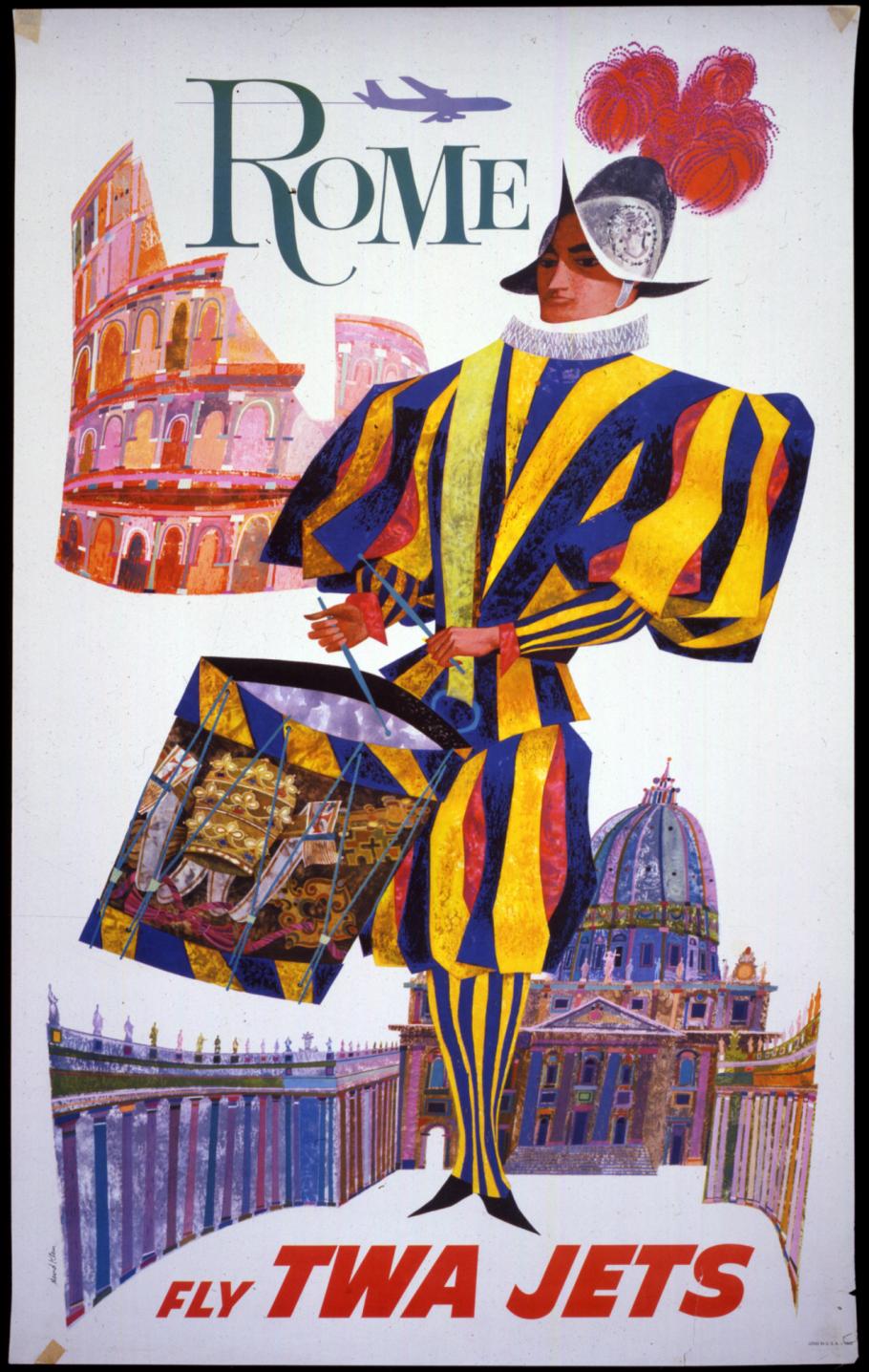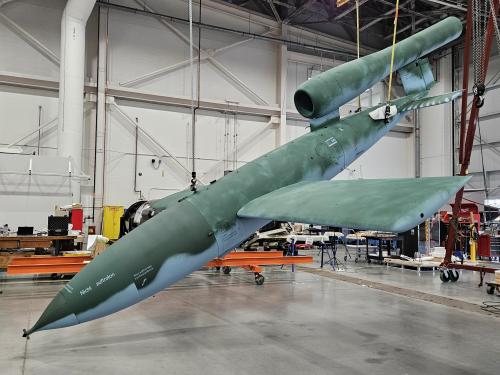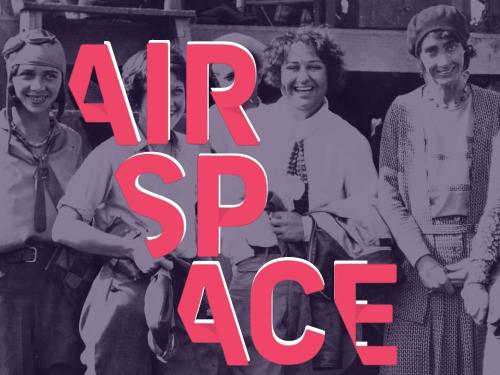
David Klein’s TWA Travel Posters
Dec 08, 2015
In the 1950s and ’60s, when commercial air travel was still considered glamorous, Trans World Airlines (TWA) was one of the world’s premier passenger carriers. TWA began in 1929 as Transcontinental Air Transport (TAT). Rather than delivering mail like many carriers at that time, TAT decided to break into the passenger market by offering cross-country service using rail at night and air during the day. Charles Lindbergh lent his name and expertise to the project when he became Chairman of the Technical Committee, a job that involved selecting airplanes and plotting a cross-country flight path that became known as the Lindbergh Line. In 1930, TWA merged with Western Air Express to form Transcontinental and Western Air, Inc. (TWA). As you can see in the poster below, the airline took advantage of its association with Lindbergh in its advertising, which gave them prestige in the eyes of the public, who were wild about him. In 1939, another famous person entered the scene —millionaire Howard Hughes, who acquired a majority share in TWA, a move that gained the airline celebrity status because of Hughes’ Hollywood connections. Hughes’ clout also put TWA in a good position to obtain better air routes, both international and domestic. In 1950, to reflect TWA’s expanding international service, Hughes changed the name from Transcontinental and Western Air to Trans World Airlines, preserving the acronym.
In the 1950s and ‘60s, movie stars and other celebrities often flew TWA, which helped fill seats with other passengers. Echoing the glitzy TWA reputation were the airline’s advertising posters, which captured the allure of travel in a single enticing scene, inspiring dreams of adventure in distant locales. These posters were pervasive — in airports, railway stations, travel agencies, airline ticket offices, hotels, and on advertising kiosks in cities across the globe. Some of the best TWA posters from the 1950s and ‘60s were created by artist David Klein (1918 – 2005). Already a successful illustrator known in the late 1940s and early 1950s for his Broadway show window cards and posters, Klein’s award-winning abstract drawings for TWA came to represent the jet age. Klein won many awards for his TWA work. The Rome poster below, which is in the Museum’s collection, won the American Society of Travel Agents (ASTA) travel poster contest in 1961. It depicts the Vatican and one of its venerable Swiss guards in full regalia, plus the Roman Coliseum. Typical of TWA posters, text is kept to a minimum and an airplane flies overhead.
This TWA poster by artist David Klein won the American Society of Travel Agents (ASTA) travel poster contest in 1961. It depicts the Vatican and one of its venerable Swiss guards in full regalia, plus the Roman Coliseum. Typical of TWA posters, text is kept to a minimum and an airplane flies overhead.
Other David Klein posters in the Museum’s collection are these two for Spain and London, dates unknown:
One of the most popular Klein designs was his 1956 New York City poster, which captured the excitement of the great tourist mecca, Times Square, in bright colors and a geometric pattern. In 2009, appraiser Nicholas Lowry, president of Swann’s Auction Galleries in New York and trustee of the Smithsonian’s Archives of American Art, appeared on Antiques Roadshow and described it as “one of the greatest graphic depictions of Times Square.” It is considered a true work of art, as witnessed by the fact that in 1957 New York’s Museum of Modern Art added it to its permanent collection. A first printing of this poster was auctioned off in 2012 for $9,944.
To see a large selection of TWA posters by David Klein, visit his estate’s website. Klein’s illustrating was not limited to TWA. He created posters for other travel companies such as Amtrak, Cunard, and Holland American Cruises. In 2000, internet travel booking company Orbitz commissioned Klein to recreate the look and feel of his jet age posters for its Planet Earth advertising campaign. Klein and illustrator Robert Swanson produced five posters for Orbitz. The Museum has some 1,300 aviation-related posters in its collection. They represent aviation products, activities, and advertising, plus nineteenth century ballooning exhibitions and twentieth century airplane meets. As former poster curator Joanne London wrote on the Museum’s website, “The collection is significant both for its aesthetic value and because it is a unique representation of the cultural, commercial, and military history of aviation. The collection represents an intense interest in flight, both public and private, during a significant period of its technological and social development.” Six hundred posters are available for viewing on the Museum’s website, and the Museum hopes to have the entire collection online eventually. As for TWA, its good fortunes did not last forever. Problems had long plagued the airline: the management whims of Howard Hughes, which lasted until 1966, airline deregulation in 1978, a disastrous takeover by corporate raider Carl Icahn in 1985, two bankruptcies in 1992 and 1995, and the 1996 explosion of TWA flight 800 near Long Island that drew attention to its aging fleet. In December 2001, TWA was acquired by American Airlines’ parent company, and the once-venerated Trans World Airlines was no more. To see more of David Klein’s art and learn more about him, visit his estate’s homepage. To read more about the Museum’s poster collection, see Joanne London’s book, Fly Now! Aviation Posters from the Smithsonian Institution’s National Air and Space Museum.
Related Topics
You may also like
We rely on the generous support of donors, sponsors, members, and other benefactors to share the history and impact of aviation and spaceflight, educate the public, and inspire future generations. With your help, we can continue to preserve and safeguard the world’s most comprehensive collection of artifacts representing the great achievements of flight and space exploration.







